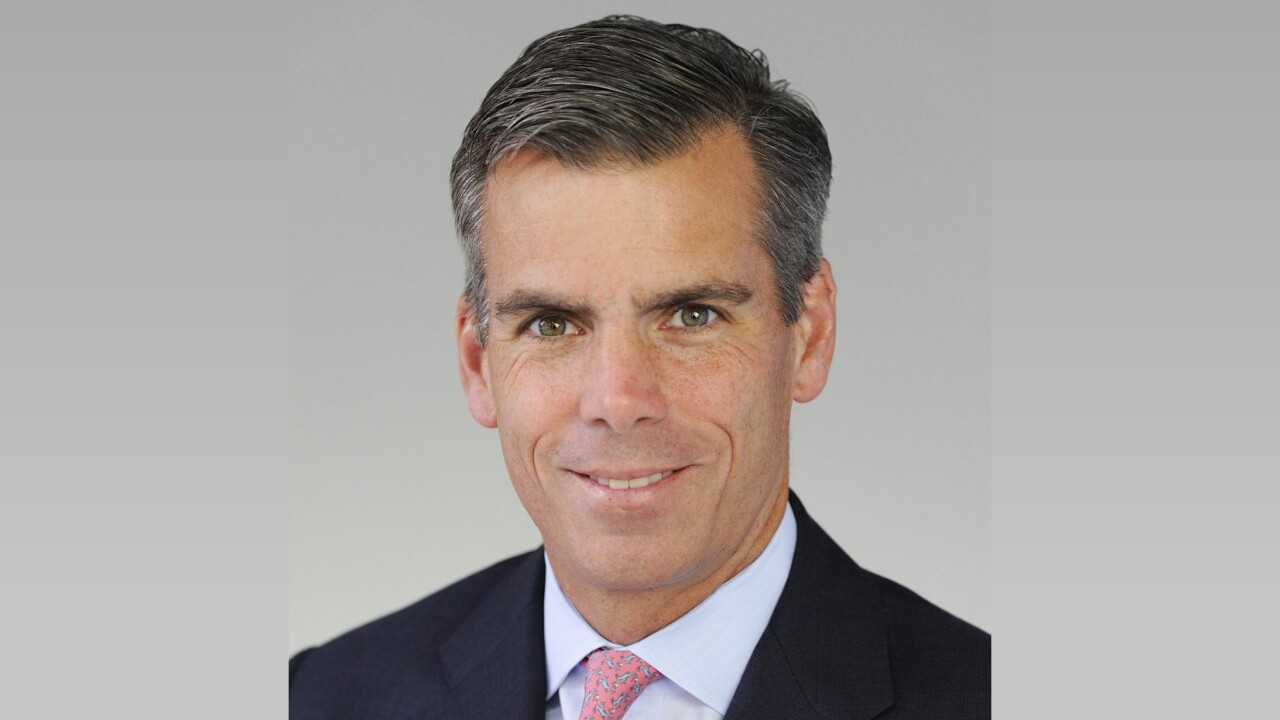JPMorgan Chase & Co.'s commercial banking arm has performed favorably in comparison with some of the $1.2 trillion-asset company's other business lines in recent times.
However, Samuel Todd Maclin, the unit's chief executive, said he has mapped out a deliberate growth plan for its loan book, because of concerns about credit quality.
"This is an environment [where] you have to be careful, because there are a lot of participants who, in our opinion, are too aggressive" in lowering their lending standards, he said in an interview this month. "We compete against anybody on price … but we are not going to compete on structure."
The New York company's commercial unit has 25,000 customers, mostly private businesses with $10 million to $500 million of annual sales. In the fourth quarter, its loan book's average balance rose 7% from a year earlier and 5% from the third quarter, to $54.2 billion.
"If it was 20%, I'd be worried that we were putting some crazy stuff on the books," Mr. Maclin told shareholders during JPMorgan Chase's investor day last month. "The fact that it's 7% makes me feel good about where we're going."
But the unit has fared better than other businesses recently, and James Dimon, the company's CEO, has said he expects the unit's overhead ratio to hit 50%, meaning the company will be spending less to generate earnings than it has in the past.
Jeffrey Harte, an analyst with Sandler O'Neill & Partners LP, said that the 50% goal is "not spectacular," but that lower credit costs should help the unit achieve the target.
Its ratio hit 51% in the fourth quarter, when operating earnings from commercial banking increased 14% from a year earlier, to $289 million. Conversely, operating earnings from JPMorgan Chase's investment bank fell 38%, while earnings from its card services unit sank 44%.
For the full year, operating earnings from commercial banking grew only 2%, to $1 billion, but Andrew Collins, an analyst at Piper Jaffray & Co., said he expects those earnings to grow 10% this year, to $1.1 billion.
Mr. Maclin said his unit's success is rooted in its ability to work with the company's other business lines.
"People joke and say we call it middle market because it sitting in the middle of the bank," he said during the interview.
The cross-selling relationship is particularly close with JPMorgan Chase's treasury and securities services, he said. Last year 800 of its middle-market banking customers bought treasury products from the company for the first time, Mr. Maclin said, though he would not say how many customers did so in previous years.
He also cited his unit's overlap with the investment bank, which also hosts large corporate lending and helps middle-market customers in structuring their securities needs. Last year JPMorgan Chase cross-revenue between investment banking and commercial lending, rose 30% from two years earlier, to $578 million, Mr. Maclin told investors.
However, working out a smooth relationship with the other units - particularly how to share revenue - has taken some work. The commercial bank reportedly gets 25% to 50% of all investment banking fees, for example.
Mr. Maclin said he would not tolerate any bickering between the units about sharing fees.
Having a relationship with the retail side of the business is also important, because borrowers at the lower end of the middle market tend not to divide their retail banking and borrowing needs, he said.
Mr. Maclin credits the July 2004 acquisition of Bank One Corp. with helping his company's commercial business.
Before the acquisition, "JPMorgan Chase had a really nice commercial banking business, but it was very small, geographically and relative to the biggest players," he said during the interview. "Bank One brought us 20-some-odd states where they had established leadership positions where we didn't have presence at all - and a lot of branches."
However, Bank One did not give JPMorgan Chase broad access to some of the nation's most attractive markets, particularly California.
"I'm regularly buying Charlie Scharf [the head of retail banking] lunch and trying to shamelessly promote our point of view in terms of those markets," hoping the retail bank would make an acquisition there, Mr. Maclin told investors.
In the meantime, his unit has to rely on satellite offices, in places like Los Angeles and San Francisco, to serve customers there, he said.
Mr. Maclin would not say just how many products and services each commercial customer buys from JPMorgan Chase, and the lack of disclosure puzzled some analysts.
Mr. Collins said the lack of concrete numbers suggest that the company is not as good at cross-selling as Wells Fargo & Co., for example.
JPMorgan Chase may have "a lot of room" to improve, he said.
Cross-selling aside, some analysts said they would not mind if its middle-market commercial loan book grew faster.
"I am surprised they are not more active in Texas," which is a fast-growing market, Mr. Collins said.
Richard X. Bove of Punk, Ziegel & Co. said JPMorgan Chase "is behind the curve" in terms of commercial lending.
The company, traumatized by the losses at Bank One and JPMorgan Chase during the last credit downturn of 2001-2003, has retrenched and never returned to full steam, he said. "They are hypersensitive" to credit.
But 7% loan growth "is not acceptable if you really running a commercial bank," Mr. Bove said. Other banking companies have shown that "you can grow your loan portfolio quite rapidly."





